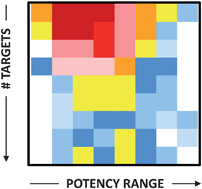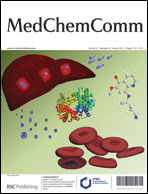Promiscuity profiles of bioactive compounds: potency range and difference distributions and the relation to target numbers and families
Abstract
Compound promiscuity is rationalized as the ability of small molecules to specifically interact with multiple targets. Promiscuity is the origin of polypharmacology, which is an intensely investigated topic in


 Please wait while we load your content...
Please wait while we load your content...